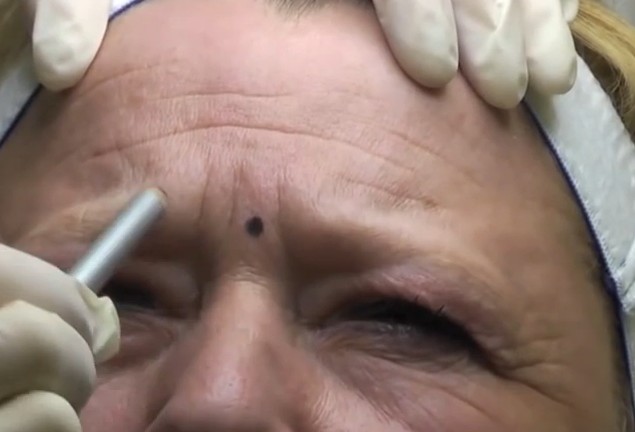Botox is a medical procedure that has been successfully treating facial wrinkles and creases for many years now. It is the brand name given to a toxin secreted by the Clostridium botulinum bacterium. Botox is also referred to by other brand names like Xeominand Dysport.
Large quantities of the toxin can cause botulism which is related to a type of food poisoning. It is a known fact that botulism can result in varied severe complications, including paralysis. However, medical experts have found a novel way to use the toxin towards human benefit. Scientists have found out that directly injecting small, diluted quantities of the toxin into certain muscles can result in regulated weakening of those muscles, which can then alleviate varied muscular problems as well as eliminate skin creases and wrinkles.
After it was discovered that Botox can have varied medical uses, including the treatment of conditions like lazy eye/strabismus and uncontrolled blinking/blepharospasm, the medical use of Botox was finally approved by the FDA towards the end of the 1980s. In 2002, the FDA approved the use of Botox for correcting glabellar lines, i.e., the moderate or severe frown lines that appear between the eyes. However, doctors also use Botox for treating creases and wrinkles on other parts of the face as well.
Insurance will usually not cover Botox procedure if it is carried out for cosmetic purposes. It is best to call up the insurance provider for further details.
How does botox work?
Botox works by obstructing the signals sent to the muscles from the nerves. As a result the injected muscle cannot contract any longer leading to the relaxation and softening of the wrinkles.
Botox is most commonly used on frown lines, forehead lines, and crow’s feet, i.e., the lines occurring around the eyes. Botox does not work on wrinkles that arise due to gravity or sun damage.
The procedure
A Botox procedure can be successfully performed in just a few minutes without any need for anesthesia. The doctor will use a fine needle to inject Botox into specific muscles. Patients will experience only mild discomfort and or a temporary stinging pain which can be alleviated with the use of an ice pack or a cold compress.
The full effect of Botox will occur in about 3 to 7 days. People need to abstain from alcohol intake for a minimum of 1 week before undergoing a Botox treatment. Anti-inflammatory drugs and aspirin intake have to be stopped at least two weeks before the procedure. This will prevent bruising.
How long does Botox last?
The effects of Botox treatment tend to last for 4 to 6 months. With the gradual return of muscle movements, the wrinkles and lines will start re-appearing. Patients will then need to undergo new Botox procedures. It may however be noted that the wrinkles and lines tend to become less intense/visible after the passage of time as the muscles adjust to staying relaxed more often.
The side effects
Some minor side effects of Botox include:
- Temporary bruising and redness of the injected site.
- Eyelid drooping in some cases. It resolves within 3 weeks. It typically happens if the Botox has moved to a different area. Hence, patients should avoid rubbing the area for about 12 hours, or lay down for 3 to 4 hours, post treatment.
- Headache, dizziness, or nausea which disappear within a day or two. It is normal and just the body’s response to Botox treatment.
Serious side effects of Botox treatment are quite rare. They are listed below:
- Patients may experience an allergic reaction characterized by itchiness or rash formation. People who develop hives should immediately stop the procedure and seek emergency treatment.
- Discomforting symptoms like increased weakness, sore throat, breathing problems, or other respiratory infections.
- Vision troubles such as blurred eyesight.
- Flu-like symptoms such as body aches, fever, continuous runny nose, headache, and chills. Patients may also experience severe fatigue and exhaustion. These symptoms usually arise a week after Botox treatment.
- In rare cases, Botox users may experience panic attacks as well as anxiety that can persist for several days to weeks.
- After Botox, some people may experience sinus infections marked by waxing and waning headaches and a stuffy nose. There may be increased pressure from the sinus on the face, problems in swallowing food, swelling and inflammation of the sinuses, and tightness of the neck. The recurrent episodes of headaches tend to abate only after a few months.
- Botox can also be used to treat an overactive bladder, i.e., a condition characterized by an uncontrollable desire to pass urine in spite of minimal urine elimination. Involuntary contraction of the bladder muscles is thought to cause this condition.Botox helps prevent such abnormal contraction and relaxes them. However, this treatment option, which is yet to gain FDA approval, can result in urological problems like bloody urine, difficulties in passing urine, and UTIs.
- Cosmetic use of Botox as well as for treatment of illnesses such as migraines can cause varied side effects such as pain in the face, bronchitis, dry mouth, indigestion, hoarseness, muscle weakness, heartburn, cough, and speaking difficulties.
- Lab studies on animals have shown that Botox injected into the facial muscles can travel to the brain and cause paralysis. Humans can thus be also susceptible to this side effect.

Who should not go for Botox treatment?
Botox formula is rich in proteins. People with elevated sensitivity to protein based products should completely avoid Botox. In fact, it is recommended for all to test their sensitivity to Botox before opting for the treatment.
People with neurological conditions, and breastfeeding as well as pregnant women should also avoid Botox.
Minimizing or alleviating the side effects of Botox
Minor side effects of Botox are temporary and usually go away on their own. It can be minimized with certain self-care guidelines discussed below. Severe side effects need immediate medical attention.
Intake of magnesium-rich foods can help alleviate hypertension caused by Botox. Users may consume soy milk or other dairy products, and green veggies like broccoli, spinach, and beans, etc. Nausea can be treated with the intake of ginger ale.
It is best to consult a specialist with lots of experience in Botox treatment so as to get the best results and avoid any side effects.


